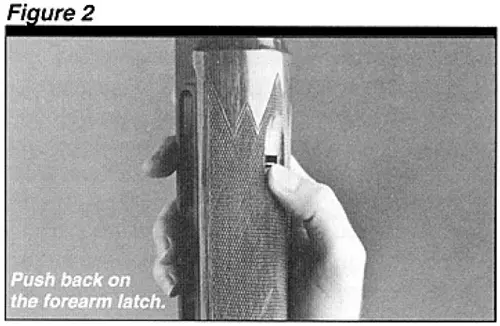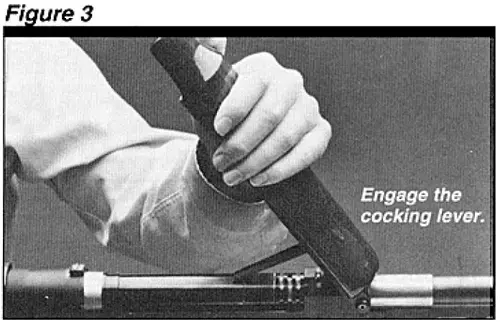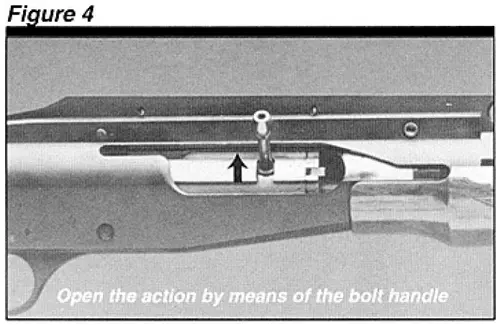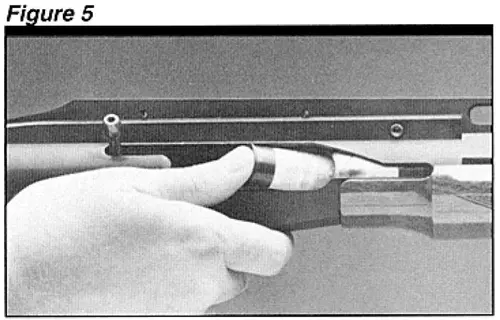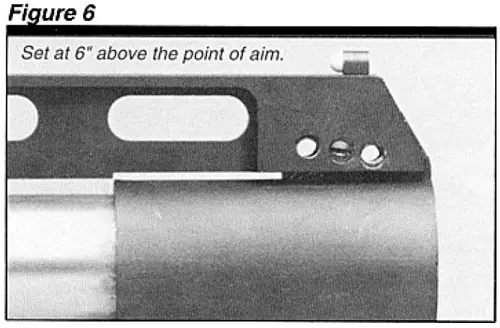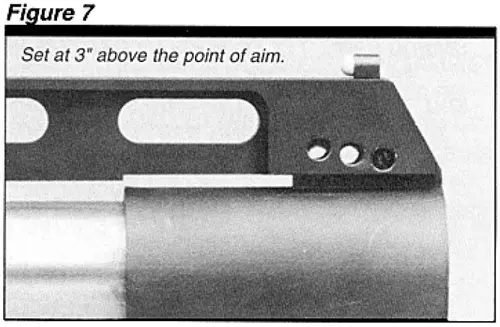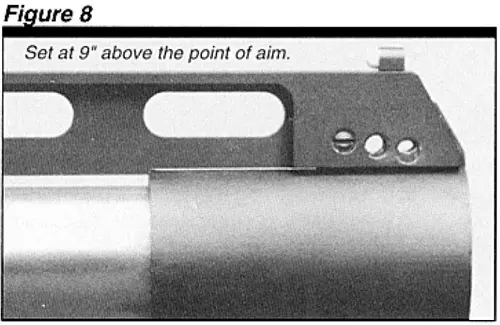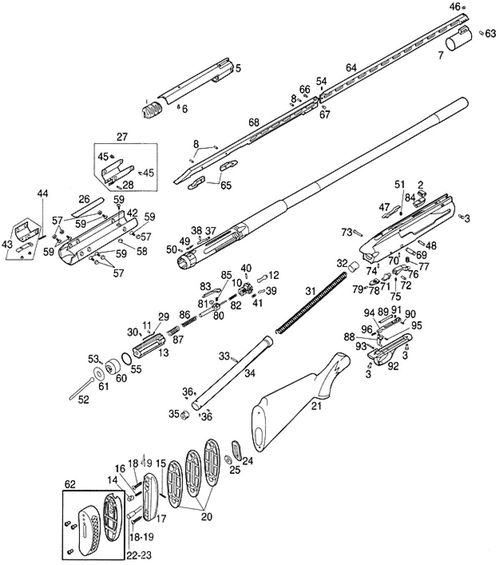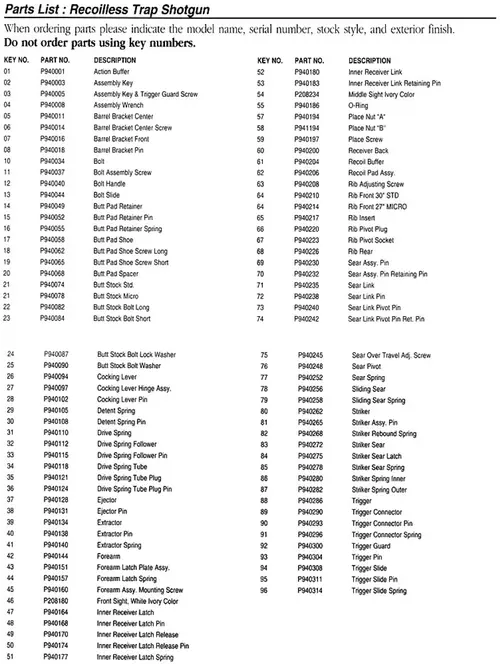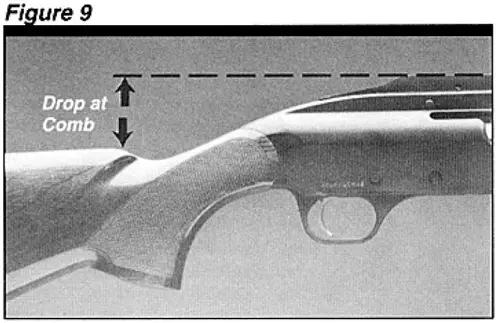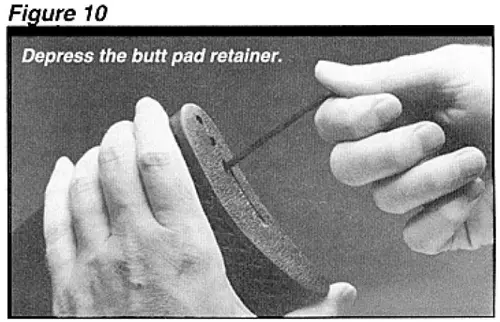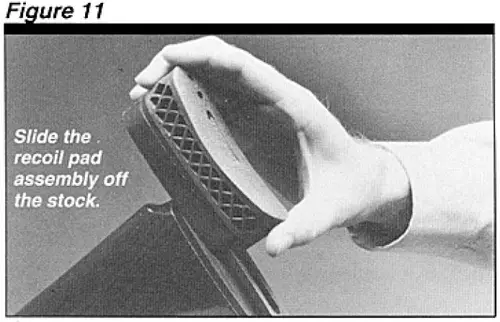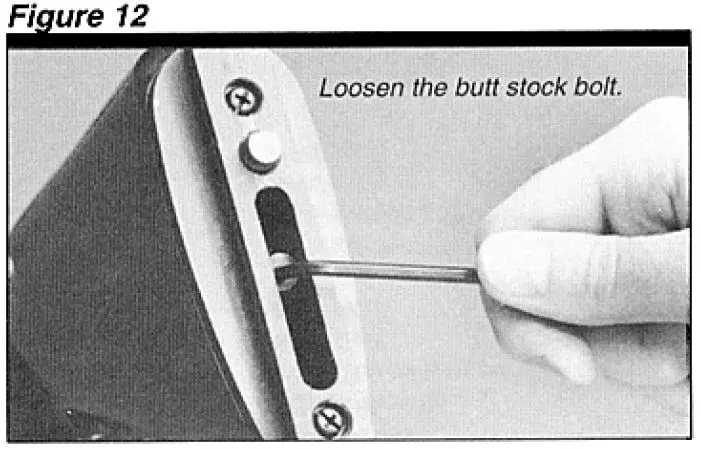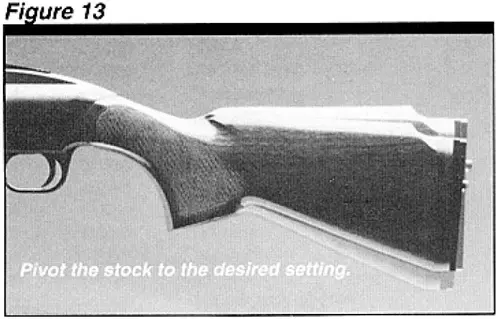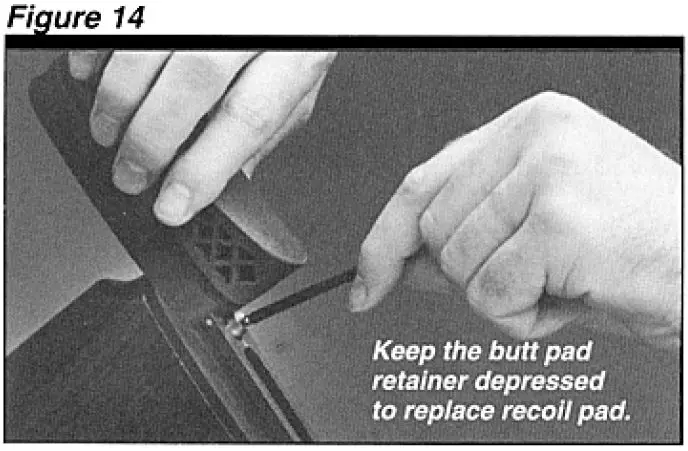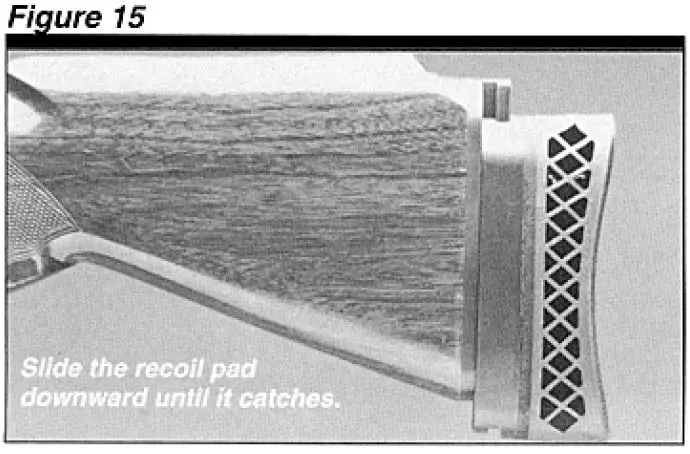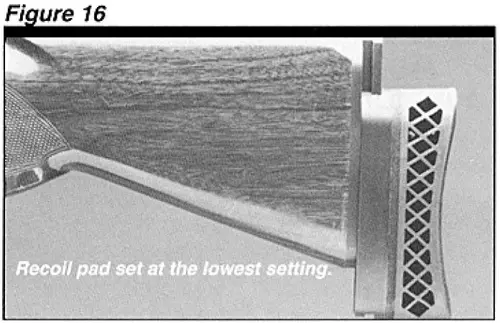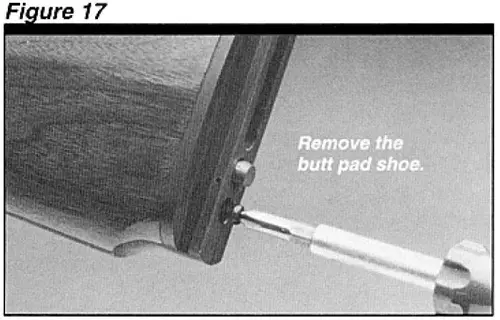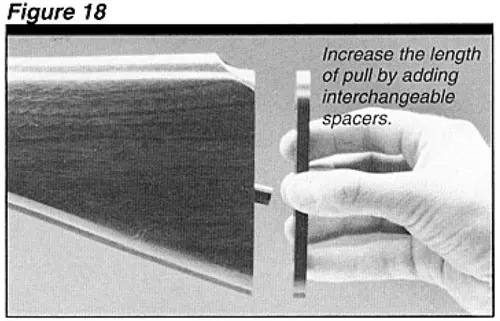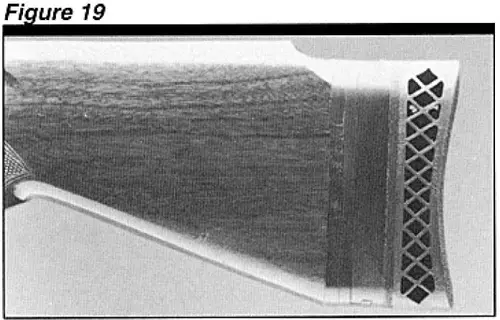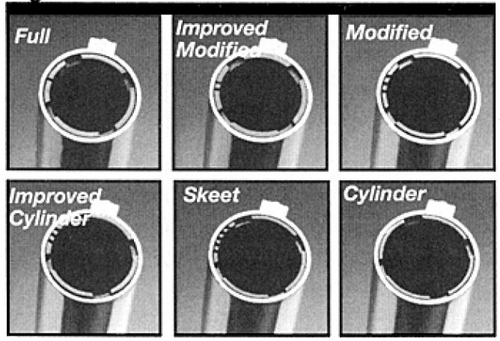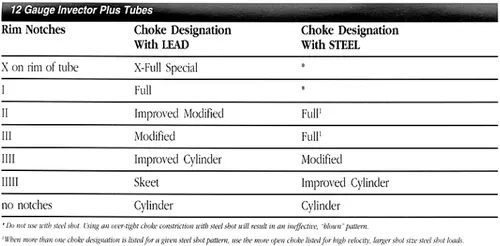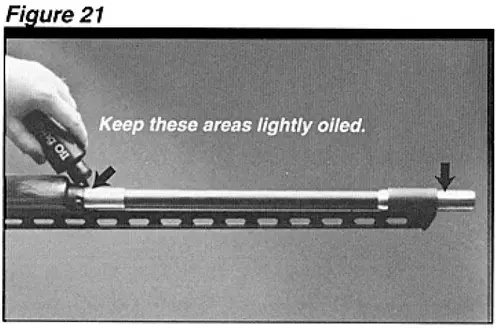Operation and care of
Recoilless Trap Single Barrel Shotgun
Recoilless Trap Single Barrel Shotgun
Thank you for choosing a Browning Recoilless Trap Single Barrel Shotgun
Thank you for choosing a Browning Recoilless Trap Single Barrel Shotgun
The Browning Recoilless is the first and only shotgun design that actually eliminates recoil. You'll find the Recoilless shotgun comfortable and enjoyable to shoot, especially on all day shoots. The Recoilless shotgun will improve your trap scores and raise your level of confidence. With a reasonable amount of care, your Recoilless shotgun should give you many years of dependable shooting. Please feel free to write us immediately if you have any observations regarding its performance and operation.
You Are Responsible for Firearms Safety
As a gun owner, you accept a set of responsibilities of the most demanding nature. How seriously you carry out these responsibilities can be the difference between life and death. Mistakes made with guns are final and cannot be paid for with money or regret.
There is no excuse for careless or abusive handling of any firearm. At all times handle your rifle and any other firearm with intense respect for its force, power and potential danger.
PLEASE READ AND UNDERSTAND ALL OF THE CAUTIONS, THE PROPER HANDLING PROCEDURES AND INSTRUCTION OUTLINED ON THIS PAGE BEFORE USING YOUR NEW FIREARM.
PLEASE READ AND PRACTICE THE FOLLOWING CAUTIONS:
CAUTION
1 - ALWAYS KEEP THE MUZZLE OF YOUR FIREARM POINTED IN A SAFE DIRECTION even though you are certain the rifle is unloaded and '' on safe.'' Never point any firearm at anything you do not intend to shoot. Be extremely alert and aware of all persons and property within range of your ammunition.
2 - CAUTION: THE RECOILLESS SHOTGUN HAS NO MANUAL SAFETY.
A trap shooter does not load his or her gun until moments before a bird is called for. For this reason, and because trapshooting demands intense concentration on shooting technique, no manual safety is provided on your Recoilless shotgun. There is then no chance for a lost bird by reason of the safety being inadvertently left "on safe."
LOAD YOUR RECOILLESS TRAP GUN ONLY WHEN SHOOTING IS IMMINENT. ONCE LOADED, THIS GUN IS READY TO FIRE AND SHOULD BE RESPECTED AS SUCH.
NEVER TEST THE MECHANISM OF ANY FIREARM WHILE IT IS LOADED OR POINTED IN AN UNSAFE DIRECTION.
3 - WHENEVER YOU HANDLE A FIREARM, OR HAND IT TO SOMEONE, MAKE SURE IT IS COMPLETELY UNLOADED. Always open the action immediately, and visually check the chamber. Make certain that they do not inadvertently contain any ammunition. Always keep the chamber empty and "safety" in the "on safe" position unless shooting is imminent.
4 - DO NOT TRANSPORT ANY LOADED FIREARM.
Keep all firearms unloaded during transport, whether stored in a holster, gun case, scabbard or other container.
5 - BEWARE OF BARREL OBSTRUCTIONS, FOR THE SAFETY OF BOTH YOUR GUN AND YOURSELF. Mud, snow, and an infinite variety of other objects may inadvertently lodge in a barrel bore. It takes only one small obstruction to cause dangerously increased pressures that can ruin (swell or rupture) the finest shotgun barrels.
BEFORE CHECKING FOR A BARREL OBSTRUCTION, BE CERTAIN YOUR FIREARM IS FULLY UNLOADED.
After assuring yourself that the firearm is completely unloaded, again, open the action, and look through the barrels to be sure they are clear of any obstruction. If an obstruction is seen, no matter how small it may be, clean the bore with a cleaning rod and patch as described later in this manual. Before the first firing, clean both bores with a cleaning rod and patch, and wipe away any anti-rust compounds in the action / chamber areas.
6 - ALWAYS COMPLETELY UNLOAD YOUR SHOTGUN WHEN NOT IN USE.
As a safety precaution, it is preferable to disassemble your gun for storage. Your responsibilities do not end when your firearm is unattended. Store your firearm and ammunition separately and well beyond the reach of children. Take all safeguards to ensure your shotgun does not become available to untrained, inexperienced or unwelcome hands.
7 - USE THE PROPER AMMUNITION. The barrel and action of all Browning fireams have been made with substantial safety margins over the pressures developed by established American commercial loads. Nevertheless, Browning assumes no liability for incidents which occur through the use of cartridges of nonstandard dimensions which develop pressures in excess of commercially available ammunition which has been loaded in accordance with standards established by the Sporting Arms and Ammunition Manufacturers' Institute (SAAMI)
BE ALERT TO THE SIGNS OF AMMUNITION MALFUNCTION. If you detect an off sound or light recoil when a shell is fired, DO NOT LOAD ANOTHER SHELL INTO THE CHAMBER. Open the action and remove the shell from the chamber. With the action open, glance down the barrel to make sure that an obstruction does not remain in the barrel. If there is an obstruction, completely clear the barrel before loading and firing again. Failure to follow these instructions can cause extensive damage to your gun and possible serious injury to yourself and others.
8 - NEVER INSERT A SHELL OF THE INCORRECT GAUGE IN ANY SHOTGUN.
The gauge of your shotgun is marked on the side of the barrel. Store all shells of different gauges in completely separate and well-marked containers. Never store shells of mixed gauges in a common container or in your pockets.
EXAMINE EVERY SHELL YOU PUT IN YOUR GUN. NEVER PUT A 20 GAUGE SHELL IN A 12 GAUGE GUN.
The most certain way to bulge or rupture a shotgun barrel is to drop a 20 gauge shell into a 12 gauge chamber. The 20 gauge shell, unfortunately, will not fall completely through the barrel; its rim is caught by the front of a 12 gauge chamber. Your gun will misfire (with the chamber appearing to be empty). It is then possible to load a 12 gauge shell behind the 20 gauge shell. If the 12 gauge shell is then fired, the result will be a so-called "12-20 burst" which can cause extensive damage to your gun and possible serious inju1y to you and others.
9 - USE SHELLS OF THE CORRECT LENGTH.
Do not use 3 1/2" shotgun shells in a shotgun or barrel with a 2 3/ 4" chamber or 3" chamber. Do not use 3" shells in a shotgun chambered for 2 3/4" shells. Doing so can result in a buildup of dangerously high pressures that may damage your gun and possibly cause serious injury to yourself or others.
The size of the chamber is inscribed, along with gauge and choke designations, on the side of the barrel.
10 - DO NOT SNAP THE FIRING PIN ON AN EMPTY CHAMBER - THE CHAMBER MAY NOT BE EMPTY! Treat every gun, with the respect due a loaded gun, even though you are certain the gun is unloaded.
11 - KEEP YOUR FINGERS AWAY FROM THE TRIGGER WHILE UNLOADING AND LOADING, UNTIL YOU ARE READY TO SHOOT.
12 - BE SURE OF YOUR TARGET AND BACKSTOP - Particularly during low light periods. Know the range of your ammunition. Never shoot at water or hard objects.
13 - ALWAYS UNLOAD THE CHAMBER AND MAGAZINE BEFORE CROSSING A FENCE, CLIMBING A TREE, JUMPING A DITCH OR NEGOTIATING OTHER OBSTACLES. Never place your loaded rifle on or against a fence, tree, car, or other similar object.
14 - WEAR EYE AND EAR PROTECTION WHEN SHOOTING. Unprotected, repeated exposure to gunfire can cause hearing damage. Wear ear protectors (shooting ear plugs or muffs) to guard against such damage. Wear shooting glasses to protect your eyes from flying particles. Allow proper distance (eye relief) between the scope and your eye when firing a scoped rifle or shotgun. Always keep a safe distance between the muzzle of your firearm and any persons nearby, as muzzle blast, debris and ejecting shells could inflict serious injury. Also, wear eye protection when disassembling and cleaning your shotgun to prevent the possibility of springs, spring-tensioned parts, solvents or other agents from contacting your eyes.
15 - DROPPING A LOADED GUN CAN CAUSE AN ACCIDENTAL DISCHARGE.
This can occur even with a firearms "safety" in the "on safe" position (remember, your Recoilless has no manual safety). Be extremely careful while hunting or during any shooting activity, to avoid dropping any firearms.
16 - IF YOUR SHOTGUN FAILS TO FIRE, KEEP THE MUZZLE POINTED IN A SAFE DIRECTION.
Hold this position for a minimum of 30 seconds. Carefully open the action and remove the cartridge. If the primer is indented, the cartridge should be disposed of in a way that cannot cause harm. If the primer is not indented, your firearm should be examined by a qualified gunsmith and the cause of the malfunction should be corrected before further use.
17 - BE DEFENSIVE AND ON GUARD AGAINST UNSAFE GUN HANDLING AROUND YOU AND OTHERS.
Don't be timid when it comes to gun safety. If you observe other shooters violating any of these safety precautions, politely suggest safer handling practices.
18 - BE CERTAIN YOUR SHOTGUN IS UNLOADED BEFORE CLEANING
Because so many gun accidents occur, when a firearm is being cleaned, special and extreme care should be taken to be sure your gun is unloaded before disassembly, cleaning and reassembly. Keep ammunition away from the cleaning location. Never test the mechanical function of any firearm with live ammunition.
19 - TEACH AND SUPERVISE FIREARMS SAFETY TO ALL MEMBERS OF YOUR FAMILY-ESPECIALLY TO CHILDREN AND NONSHOOTERS.
Closely supervise newcomers to the shooting sports. Encourage enrollment in hunting / shooting safety courses.
20 - NEVER DRINK ALCOHOLIC BEVERAGES OR TAKE ANY TYPE OF DRUGS BEFORE OR DURING SHOOTING.
Your vision and judgment could be dangerously impaired, making your gun handling unsafe to you and to others.
21 - PERFORM PERIODIC MAINTENANCE - AVOID UNAUTHORIZED SERVICING!
Your new firearm is a mechanical device which will not last forever, and as such, is subject to wear and requires periodic inspection, adjustment, and service. Browning firearms should be serviced by a Browning Recommended Service Center or by Browning's service facility in Arnold, Missouri. Browning cannot assume any responsibility for injuries suffered or caused by unauthorized servicing, alterations or modifications of Browning firearms.
22 - BROWNING RESERVES THE RIGHT TO REFUSE SERVICE ON FIREARMS THAT HAVE BEEN ALTERED, ADDED TO OR SUBSTANTIALLY CHANGED.
Removal of metal from barrel(s), or modifications of the firing mechanism and / or operating parts may lead to Browning's refusal of service on such firearms. Browning will charge the owner for parts and labor to return the firearm to original Browning specifications.
Read and heed all warnings in this instruction book, on ammunition boxes and with all accessories that you install on your firearm. It is your responsibility to secure the most up-to-date information on the safe handling procedures for your Browning gun.
Browning assumes no liability for incidents which occur when unsafe or improper gun accessories or ammunition combinations are used.
DO NOT, UNDER ANY CIRCUMSTANCES, ALTER THE TRIGGER OR OTHER PARTS OF THE FIRING MECHANISM OF THIS OR ANY OTHER FIREARM. FAILURE TO OBEY THIS WARNING MAY RESULT IN INJURY OR DEATH TO YOURSELF OR OTHERS.
BE CAREFUL!
BE CAREFUL!
Recoilless Trap Single Barrel Shotgun
Recoilless Trap Single Barrel Shotgun
Nomenclature
Nomenclature
In conventional gun terminology, the position and movement of gun parts are described as they occur with the gun horizontal and in normal firing position; i.e., the muzzle is forward or in front; the buttstock is rearward or to the rear; the trigger is downward or underneath; the rib is upward or on top. For general parts nomenclature refer to Figures 1.
General Operation
General Operation
The design of the Recoilless shotgun eliminates most recoil before it even starts. The Recoilless consists of an inner mechanism, composed of an inner receiver, bolt, striker system and barrel. This inner mechanism is driven forward, inside of an outer receiver by a drive spring when the firing mechanism is cocked and released. A large portion of the recoil force is expended overcoming the inertia of the moving mass of the inner mechanism. After firing, the inner mechanism recoils to the rear while compressing the drive spring until it strikes the buffer in the inner receiver, this absorbs additional recoil forces. The Recoilless is a bolt action design and is loaded through the use of a bolt handle. Locking lugs on the bolt provide exceptionally tight lockup and strength. Because trapshooting demands intense concentration on shooting technique, no manual safety is provided on the Recoilless shotgun.
Serial Number
Serial Number
The serial number of your Recoilless shotgun can be found on the right side of the receiver - just below the ejection / loading port. Record this number for future reference.
Ammunition
Ammunition
All Recoilless Models are designed to shoot and function with 2 3/4" 12 gauge trap loads only. Browning can assume no responsibility for incidents which occur through the use of cartridges of nonstandard dimension or those developing pressures in excess of industry standards established by the Sporting Arms and Ammunition Manufacturers Institute (SAAMI).
CAUTION: DO NOT USE 3" OR 3 1/2" SHOTGUN SHELLS IN ANY SHOTGUN OR BARREL WITH A 2 3/4" CHAMBER. THE SIZE OF THE CHAMBER IS INSCRIBED ALONG WITH GAUGE AND CHOKE DESIGNATIONS, ON THE SIDE OF THE BARREL.
Initial Cleaning
Initial Cleaning
Various exposed metal parts of your new Recoilless have been coated at the factory with a rust preventative compound. Clean the anti-rust compound from the inside of the barrel and chamber, and generally wipe clean the metal surfaces at the rear of the forearm, on the interior areas of the receiver, as well as any other parts coated with this compound. Browning Oil is ideal for wiping and cleaning these parts and for giving your gun its first lubrication.
Clean the barrel using a cleaning rod and patch as explained under "Cleaning Suggestions." Read this entire manual before performing the first cleaning, to learn necessary information on opening the action, etc.
No Manual Safety
No Manual Safety
CAUTION: REMEMBER, THE RECOILLESS SHOTGUN HAS NO MANUAL SAFETY. THE RECOILLESS IS DESIGNED SOLELY FOR TRAP SHOOTING.
A trap shooter does not load his or her gun until moments before a bird is called for. For this reason, and because trapshooting demands intense concentration on shooting technique, no manual safety is provided. There is then no chance for a lost bird by reason of the safety being inadvertently left "on safe."
LOAD YOUR RECOILLESS TRAP GUN ONLY WHEN SHOOTING IS IMMINENT. ONCE LOADED, THIS GUN IS READY TO FIRE AND SHOULD BE RESPECTED AS SUCH.
Always keep the muzzle of your shotgun pointed down range at all times when on the shooting line. When leaving or moving along the line always open the action. Never have the action of your Recoilless closed except when you are on the line, ready to shoot. When you retrieve your gun from its case or from a gun rack, always immediately inspect the action and check to assure that no shell is in the chamber.
ALWAYS KEEP THE MUZZLE OF YOUR RECOILLESS POINTED IN A SAFE DIRECTION.
FAILURE TO FOLLOW THE ABOVE INSTRUCTIONS COULD RESULT IN INJURY OR DEATH TO YOURSELF OR OTHERS.
General Operating Procedures
General Operating Procedures
Your Recoilless shotgun has been shipped to you with the barrel in the forward position. This is the recommended position for storing your Recoilless. With the barrel in the forward position, and the action or bolt closed, your gun cannot be loaded or fired. In order to fire or load the Recoilless it is necessary to re-cock the barrel and action by means of the cocking lever. Storing your gun with the barrel in the forward position also puts less load on the drive spring.
COCKING THE FOREARM -
The cocking lever is located underneath the forearm. To get access to the cocking lever, turn the gun upside down and push back on the forearm latch (See Figure 2), this releases the forearm. Raise the forearm until the cocking lever engages the notch on the surface of the barrel (See Figure 3). With the cocking lever engaged with the barrel notch, press the forearm down until the inner mechanism latches to the rear.
VERY IMPORTANT: DO NOT OVER EXERT PRESSURE ON THE FOREARM. EXCESSIVE PRESSURE ON THE FOREARM AFTER COCKING COULD RESULT IN DAMAGE TO THE FOREARM. Turn the barrel upright and disengage the cocking lever from the barrel. Return the forearm to its latched position. Your Recoilless is now fully cocked and ready to be loaded.
IMPORTANT: IF THE ACTION OF THE RECOILLESS SHOULD GO FORWARD WITHOUT THE GUN FIRING IT WILL BE NECESSARY TO RE-COCK THE BARREL AND ACTION BEFORE BEING ABLE TO LOAD OR FIRE YOUR GUN.
LOADING -
CAUTION: REMEMBER, THE RECOILLESS SHOTGUN HAS NO MANUAL SAFETY. LOAD YOUR RECOILLESS TRAP GUN ONLY WHEN SHOOTING IS IMMINENT. ONCE LOADED, THIS GUN IS READY TO FIRE AND SHOULD BE RESPECTED AS SUCH. AT ALL TIMES DURING THE LOADING AND UNLOADING PROCEDURES BE SURE YOUR MUZZLE IS POINTING DOWN RANGE, IN A SAFE DIRECTION.
1 - Open the action by pushing up on the bolt handle (See Figure 4).
2 - Pull the bolt handle fully to the rear until the bolt or action stops and can go no further.
3 - Insert a shell into the ejection port (See Figure 5) and close the bolt by pushing it fully forward.
4 - The bolt is locked closed by pushing down on the bolt handle.
5 - Your Recoilless is now ready to fire.
FIRING YOUR RECOILLESS -
with the chamber loaded, and the bolt dosed, the Recoilless is fired by simply pulling the trigger. Never pull the trigger unless the muzzle is pointed down range, at the clay target. Make sure other shooters, spectators, trap operators are not down range. If there is any doubt about down range safety, open the action immediately and remove the shell until you are certain all conditions are safe.
UNLOADING -
1. Open the action by pushing up on the bolt handle, as explained previously.
2. A fired shell will eject completely clear of the shotgun when the action is opened quickly and sharply to the rear. If you do not want your fired shell to eject far from your shotgun, open the action slowly. An unfired shell can then be easily removed from the chamber with your fingers.
If you will be ejecting shells onto the ground it is important to point the ejection port-by slightly canting the shotgun to the right-so the shell ejects clear of your body and face.
Remember, never have the bolt of your Recoilless closed except when you are on the line ready to shoot. It is a courtesy to other shooters, and a wise safety practice, to keep your action open at all other times.
RIB ADJUSTMENTS
Adjusting Point of Impact -
BEFORE PERFORMING THESE AND ANY ADJUSTMENTS, ALWAYS MAKE CERTAIN THERE ARE NO SHELLS IN THE CHAMBER.
Point of impact is determined by patterning a shotgun and determining the relationship between where you were aiming and where the actual center of the pattern is. The Recoilless comes preset with the point of impact approximately 6" above the point of aim at 40 yards (See Figure 6). Point of impact above the actual aiming point allows you to keep the clay bird in view constantly - just above the rib - as you swing and shoot.
The Recoilless has a point of impact adjustment range of approximately 3" to 9" above point of aim at 40 yards. Three approximate ranges of adjustment are available: 3", 6" and 9". The front hole, the hole nearest the muzzle, is for 3" high. To set point of impact 3" above point of aim, simply insert the rib adjusting screw and tighten it into the front hole (See Figure 7). To set point of impact at 9" above point of aim, insert and tighten the rib adjusting screw in the rear hole, the hole closest to the receiver (See Figure 8).
In most instances, an adjustment to the point of impact will necessitate a slight modification of the stock's comb height and drop through use of the adjustable stock and recoil pad in order to establish a correct sight picture.
STOCK AND RECOIL PAD ADJUSTMENTS -
The stock and recoil pad on the Recoilless are adjustable for drop and length of pull. The Recoilless shotgun has been designed to accommodate any shooter regardless of size or shooting style. The adjustable stock and recoil pad give the shooter a customized fit and allow you to shoot where you want to shoot.
Adjusting the Stock -
Adjusting the drop at the comb allows you to align your eye perfectly with the plane of the rib. A correct sight picture for most shooters should have you looking down the rib with the bottom of the front bead resting on the top of the middle bead. This forms a "figure eight" or "stacked" configuration. Although some of the rib will show as you look down the barrel, no rib should show between the beads. An adjustable stock allows you to line up correctly and consistently each time you shoot. A stock that is too high will make the shooter look over the end of the barrel and shoot high. Consequently, a stock that fits the face too low will make the shooter shoot low.
Recoilless Trap Shotgun
Schematic is provided for parts identification only and should not be used as a guide to assemble guns.
IMPORTANT: When ordering parts, list part number, part name, gauge, model and serial number. Do not use the Key Number when ordering.
CAUTION: Browning parts are made exclusively for Browning guns and are not recommended for use in other guns even though models may be similar. Inadequately fitted parts may be dangerous.
Adjusting the Stock continued -
The drop measurement is determined by measuring the distance between the plane formed by the top of the rib and the top of the cheek piece itself (See Figure 9).
BEFORE PERFORMING ANY ADJUSTMENTS, ALWAYS MAKE CERTAIN THERE IS NO SHELL IN THE CHAMBER.
The stock on the Recoilless can be pivoted up or down to adjust drop.
1. Remove the recoil pad by inserting the long end of the alien wrench (supplied with your gun) into the bottom hole on the back of the recoil pad. Push down on the allen wrench to depress the butt pad retainer (See Figure 10). With the butt pad retainer depressed you will be able to slide the recoil pad and butt stock assembly up and off the stock (See Figure 11).
2. Locate the butt stock bolt and loosen (See Figure 12).
3. Pivot the stock either up or down to your desired setting. (See Figure 13). Once you've found a position that gives you a correct sight picture, tighten the butt stock bolt.
DROP ADJUSTMENTS ARE A MATTER OF TRIAL AND ERROR. ADJUST A LITTLE AT A TIME UNTIL YOU OBTAIN THE DESIRED SIGHT PICTURE.
4. Replace the recoil pad by sliding it back onto the stock while depressing the butt pad retainer (See Figure 14). The recoil pad should solidly snap in place.
Adjusting the Recoil Pad -
When properly shouldered, your shotgun should nestle into the pocket of your shoulder. Once you have made adjustments to the drop you may find it necessary to adjust the recoil pad to obtain a perfect fit. The recoil pad on the Recoilless can be set at two different settings in the downward position.
1. Adjust the recoil pad by inserting the long end of the alien wrench (supplied with your gun) into the bottom hole on the back of the recoil pad. Push down on the allen wrench to depress the butt pad retainer.
2. With the butt pad retainer depressed, slide the recoil pad downward until the butt pad retainer catches the next setting (See Figure 15).
3. To move the recoil pad to the lowest setting, insert the alien wrench in the middle hole in the recoil pad and depress the butt pad retainer. Slide the recoil pad until it catches (See Figure 16).
Adjusting Length of Pull -
The length of pull is the distance from the front of the gun's trigger to the center of the butt stock. A length of pull that is too short puts the shooter's face too far up on the stock. A length of pull that is too long forces the shooter to mount the gun on the edge of their shoulder or arm. Length of pull on the Recoilless is adjusted through the use of four interchangeable spacers. Each spacer is 1/4" in thickness. Length of pull for the Micro Recoilless can be set at 13", 13 1/4", 13 1/2" and 13 3/4". Length of pull for the Standard Recoilless can be set at 14", 14 1/4", 14 1/2" and 14 3/4".
1. Remove the recoil pad by inserting the long end of the alien wrench into the bottom hole on the back of the recoil pad. Push down on the alien wrench to depress the butt pad retainer and slide the recoil pad up and off the stock.
2. Remove the two butt pad shoe screws (See Figure 17) and remove the butt pad shoe.
3. With the butt pad shoe removed, fit a butt pad spacer on the stock (See Figure 18).
4. Replace the butt pad shoe by replacing and tightening the butt pad shoe screws and sliding back on the recoil pad.
5. If length of pull is still too short, repeat steps 1 and 2; removing the recoil pad and butt pad shoe. Stack another butt pad spacer onto the last spacer (See Figure 19) and replace the butt pad shoe and recoil pad. Repeat the procedure again if necessary.
ADJUSTING THE LENGTH OF PULL CAN BE A MATTER OF TRIAL AND ERROR.
lnvector-Plus Choke Tube System
lnvector-Plus Choke Tube System
The Recoilless shotgun features a barrel fitted with the Invector-Plus choke tube system. The Invector Plus system is a screw in choke tube system with interchangeable tubes. You can confirm this by reading the inscription on the right side of the barrel. The words INVECTOR - PLUS mean your shotgun uses the lnvector-Plus choke tube system designed for use in Browning 12 gauge shotguns with backbored barrels. The extra length, combined with special tube tapers, gives the finest possible patterns for target shooters. Plus, you retain the same choke switching convenience of the Standard Invector system. lnvector Tubes are fully steel and lead shot compatible. A special "Plus" choke tube wrench is provided to remove and tighten these tubes.
CAUTION: Invector-Plus tubes are for use in Browning shotguns with Browning back-bored barrels only (.745" + 0 - .005), and are not interchangeable with standard 12 gauge Invector choke tubes. Do not use lnvector Plus tubes in barrels threaded for Standard Invector tubes. Do not use Standard lnvector tubes in baffels threaded for lnvector Plus tubes. Failure to follow these warnings may cause damage to your gun and cause injury to yourself and others.
DO NOT FIRE THIS SHOTGUN WITHOUT HAVING AN INVECTOR CHOKE TUBE INSTALLED. PERMANENT DAMAGE MAY RESULT TO THE THREADS.
DO NOT USE BROWNING INVECTOR CHOKE TUBES IN ANY SHOTGUN BARRELS NOT SUPPLIED BY BROWNING. ALSO, DO NOT USE ANY OTHER CHOKING DEVICE IN ANY SHOTGUN BARRELS SUPPLIED BY BROWNING. USE ONLY THE APPROPRIATE GAUGE AND TYPE OF CHOKE TUBES MARKED INVECTOR OR INVECTOR-PLUS.
CAUTION: WHENEVER HANDLING ANY SHOTGUN FOR THE PURPOSE OF REMOVING OR INSTALLING A CHOKING DEVICE, MAKE ABSOLUTELY CERTAIN THE GUN IS FULLY UNLOADED, AND THE ACTION IS OPEN! NEVER ATTEMPT TO REMOVE OR INSTALL A SHOTGUN CHOKING DEVICE ON A LOADED FIREARM!
TUBE REMOVAL -
1. Fully unload your Recoilless.
ALWAYS UNLOAD YOUR SHOTGUN- FULLY. INSPECT THE CHAMBER TO MAKE SURE IT DOES NOT CONTAIN ANY SHELLS.
2. Open the action using the boh handle as explained previously.
3. Use the Invector wrench to loosen the tube, turning it counterclockwise. Finger twist the tube the rest of the way out of the barrel.
TUBE INSTALLATION -
1. Fully unload your Recoilless.
ALWAYS UNLOAD YOUR RECOILLESS - FULLY. INSPECT THE CHAMBER TO MAKE SURE IT DOES NOT CONTAIN ANY SHELLS.
2. Open the action using the bolt handle.
3. Before installing a tube, check the internal choke tube threads in the muzzle, as well as the threads on the Invector choke tube to be sure they are clean. Lightly oil the threads with an oil-like Browning Oil.
4. Using your fingers, screw the appropriate tube into the muzzle end of the barrel, tapered end first, notched end outward. When it becomes finger-tight, use the lnvector choke tube wrench to firmly seat the tube.
THE INVECTOR-PLUS CHOKE TUBE SHOULD BE PERIODICALLY CHECKED TO ASSURE THAT IT IS TIGHT AND FIRMLY SEATED. BEFORE CHECKING, FOLLOW ALL THE SAFETY GUIDELINES OUTLINED ABOVE.
Replacement and additional tubes and wrenches are available from your Browning dealer, or by calling or writing:
Browning Consumer Department
One Browning Place, Morgan,
Utah 84050-9326.
801-876-2711.
Canadian customers please call or write:
Browning Canada Sports Ltd./Ltee,
5617 Chemin St-Franfois,
St-Laurent, Quebec H4S 1W6.
(514) 333-7261
INVECTOR TUBE IDENTIFICATION-
To identify individual Invector tubes, refer to the abbreviated indications on the side of the tube, or use the identification mark(s) located on the top rim of each tube. (See Figure 20.)
SELECTING THE CORRECT
INVECTOR CHOKE TUBE -
Although your Recoilless is designed solely for target use with lead shot loads, the lnvector-Plus choke system is fully compatible with factory steel shot loads as well. On the chart on the next page we have included steel shot information in addition to the lead shot choke / pattern specifications you will need. Both lead and steel designations have proven necessary for hunters using other Browning guns with standard lnvector and lnvector-Plus tubes because in any given tube, steel shot gives a different pattern than lead shot. In fact, even larger steel shot dia1neters result in different patterns than smaller steel shot sizes. Each designation is inscribed on each choke tube. Remember, you will only need to refer to the lead shot designations when selecting a proper lube for your Recoilless, as your new shotgun is unsuitable for hunting use.
Figure 20
Figure 20
Cleaning Suggestions
Cleaning Suggestions
The Recoilless is a target gun, and as such will function better and more reliably over a longer period of time if it is properly maintained and kept clean.
BEFORE PERFORMING ANY CLEANING PROCEDURES, ALWAYS MAKE CERTAIN THERE IS NO SHELL IN THE CHAMBER.
You should clean your Recoilless after every day of shooting, and more often if it becomes excessively dirty. A minimum cleaning includes wiping down the action and oiling key parts. Most regular maintenance will also include cleaning the barrel. If you encounter a function problem be sure to give your gun a thorough cleaning, to see if it solves the problem, before seeking the services of a Browning Recommended Service Center or the Browning Service Facility in Arnold, Missouri, or a competent gunsmith.
Cleaning Procedures
Cleaning Procedures
BE CERTAIN YOUR GUN'S CHAMBER IS UNLOADED. ALWAYS WEAR PROTECTIVE SAFETY GLASSES DURING ALL ASSEMBLY, DISASSEMBLY AND CLEANING PROCEDURES. KEEP AMMUNITION AWAY FROM THE CLEANING AREA. DO NOT TEST THE FUNCTION OF YOUR FIREARM WITH LIVE AMMUNITION.
1. Using a shotgun cleaning rod, with tip and patch large enough for a snug fit in the bore, insert the rod and lightly oiled parch in the muzzle end of the barrel and run back and forth several times.
2. Inspect the chamber and bore for leading and plastic residue. Plastic residue is often left in the bore from the shot cups in modern shotshells. Leading and plastic residue will appear as longitudinal streaks and are usually more predominant near the muzzle and just forward of the chamber. A normal amount of either is common and is not serious.
3. If leading or plastic residue seems excessive you can remove it by brushing the bore with a brass brush. Soak the brush or spray the bore with powder solvent first. Scrub until clean. To prevent bristles from breaking off, push the brush fully through each time before pulling it back through.
4. After all leading and residues have been removed run a clean dry patch through the bore. Follow this with a final, lightly oiled patch.
5. The interior of the receiver should periodically be wiped off with a clean rag. Any dried oil in the receiver area should also be removed. Follow this cleaning with a very light film of oil Do not pour large quantities of oil into the action. An excess of oil will run into the wood and cause it to soften or warp.
6. Wipe all exposed metal Surfaces with an oiled cloth making sure to wipe clean all finger marks. Put a couple drops of oil on the barrel where it slides inside the barrel bracket and on the barrel where it enters the forearm (See Figure 21).
7. Wipe all wood surfaces with Browning Oil or a quality furniture polish, but not both.
8. Inspect the barrel and chamber TO BE CERTAIN NO PATCHES HAVE INADVERTENTLY BEEN LEFT IN THEM.
NEVER ATTEMPT TO TAKE YOUR RECOILLESS APART FURTHER THAN EXPLAINED IN THIS MANUAL.
This is a specialized, finely tuned mechanism. You may permanently mar it by attempting to disassemble the inner mechanism assemblies. If further disassembly for service or cleaning is required, take your gun to a Browning recommended Service Center or a competent gunsmith, or send it to our Arnold, Missouri Service Facility as explained under "Service or Repair.''
SERVICE OR REPAIR
SERVICE OR REPAIR
If your firearm should require service or repairs, we suggest you first contact a local recommended Browning Firearms Service Center. Contact your Browning sporting goods dealer or call our Service Department for the address of the Service Center nearest you. Otherwise, you may send your firearm directly to our own Service department. For technical questions about your firearm or service call our Service Department.
Browning Service Department
3005 Arnold Tenbrook Road
Arnold, Missouri 63010-9406
Phone: 1-800-322-4626
Canadian Customers call or write:
Browning Canada Sports Ltd. / Ltee,
5617 Chemin St-Francois
St-Laurent, Quebec H4S 1W6
Phone: (514) 333-7261
When returning your firearm for servicing, you must do the following:
- Be sure it is completely unloaded.
- Package it securely in a cardboard container.
- Enclose a letter with your firearm that clearly describes the trouble experienced and the repairs or alterations desired.
- If convenient, send a copy of the letter to us separately
- Never return ammunition with your firearm. It is against postal and most commerce regulations.
If you have any questions about this manual or about any other Browning products, call or write our Consumer Information Department:
Browning Consumer Information
Morgan, Utah 84050
Phone: (801) 876-2711
BROWNING CANNOT ASSUME ANY RESPONSIBILITY FOR INJURIES SUFFERED OR CAUSED BY UNAUTHORIZED SERVICING, ALTERATIONS OR MODIFICATIONS OF BROWNING FIREARMS.
Read and heed all warnings in your owner’s manual, on ammunition boxes and with all accessories that you install on your firearm. It is your responsibility to secure the most up-to-date information on the safe handling procedures for your Browning gun. Browning assumes no liability for incidents which occur when unsafe or improper gun accessories or ammunition combinations are used.
Do not, under any circumstance, alter the trigger, safety or parts of the firing mechanism of this or any other firearm. Failure to obey this warning may result in injury or death to yourself or others.




